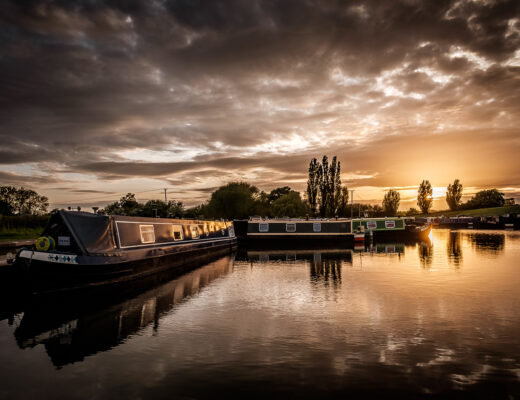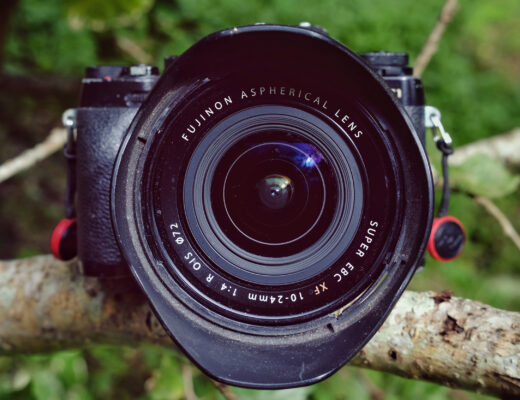Photographers around the world have long revered the Fujifilm X100 series for its blend of classic design, excellent image quality and portable convenience. Such has been its popularity in recent years that anyone wishing to purchase an X100 camera has faced a months-long waiting list. It is against this background that Fujifilm has released the X100VI, the latest version of the series. But does this new model live up to the hype of its predecessors? Let’s go hands-on and find out.

As a full-time documentary photographer, I have been a huge fan of the Fujifilm X100 series since it was first released in 2011. Back then, it was known as the (not-so-snappily-named) Fujifilm Finepix X100 and, over the years, I have used every iteration of X100. For the past few weeks, this list has included the X100VI, the latest in the series. It is worth noting that the model I have been using is a pre-release version; Fujifilm asked me not to publish the photographs I captured as the firmware will likely be updated before the production models hit the shelves.
Design and Build: A Legacy Continue
Before we get into what has changed with the Fujifilm X100VI, let’s focus a little on what has stayed the same. The X100VI continues the series’ tradition of a retro-inspired design that pays homage to the rangefinders of yesteryears. My fear that Fujifilm would be tempted to update the camera’s styling and size to make way for new features has proved unfounded, as the X100VI is pretty much the same size as its predecessor, the X100V. The lens housing is about a millimetre or so longer and the new model feels slightly heavier in hand, but in practice, the X100VI is practically indistinguishable from the previous model. Built to last, with a robust and weather-resistant body that can withstand the rigours of daily use, it retains the same compact, lightweight characteristics that many photographers have found to be perfect for discreet and unobtrusive shooting on the move.

The super-sharp 23mmF2 fixed lens, hybrid OVF/EVF viewfinder, built-in physical ND filter and weather resistance have all been retained from the previous model. Perhaps controversially for some, the X100VI also retains the older NP-W126S battery rather than the newer, more powerful NP-W235 battery found in the X-T5 and other flagship Fujifilm cameras. Fujifilm explained that retaining the battery is one reason they could maintain the same compact form factor of the X100Vl, allowing all the accessories to fit both cameras. While this makes a lot of sense, some will still be disappointed that the X100VI will not benefit from the increased power of the NP-W235 battery.
Image Quality: Remarkable Improvements
Arguably, the most significant upgrade in the X100VI is the addition of the new 40.2MP X-Trans CMOS 5 sensor, a substantial increase from the 26MP of its predecessor. This higher resolution allows for greater detail and improved cropping flexibility, providing photographers with greater scope to fine-tune their compositions in post-processing. It also brings an improved ISO range, starting at ISO 125 compared to the X100V’s ISO 160. Additionally, the camera’s maximum electronic shutter speed has significantly increased to 1/180,000 sec, up from the previous maximum of 1/32,000 sec. While these ultra-fast shutter speeds are pretty niche — most photographers will likely be satisfied with the 1/4,000 sec maximum of the mechanical shutter — those who need these speeds will be grateful for the increased capabilities.

For me, though, the real game-changer of the X100VI is the introduction of In-Body Image Stabilisation (IBIS). Significantly enhancing the camera’s low-light capabilities, the addition of IBIS will allow photographers to capture sharp images even at slow shutter speeds, making the X100VI even more versatile in varied lighting conditions. Fujifilm claims that the new IBIS system offers up to 6.0 stops of stabilisation. While I could not precisely test this claim, I could capture very usable photographs at speeds as low as 1/16 sec while handholding the camera and, depending on the light, even 1/4 sec was usable for some situations. The inclusion of IBIS will be huge for anyone who finds themselves shooting in low-light conditions. I know this feature alone will bring so much more versatility to my photography; I am sure I will not be alone.
Video Capabilities: No Longer a Stills-Only Camera
Despite video capture being possible since the first model, it is fair to say that the X100 series has always been seen as primarily a stills-photography camera. But with the release of the X100VI, that is no longer the case. The latest iteration makes a significant leap in video capabilities, offering 4K 60fps and 6.2K 30fps video recording options, a substantial improvement over the 4K 30fps of the X100V. These specifications aren’t particularly revolutionary compared with other, more video-focused, Fujifilm cameras, but throw IBIS into the mix and the X100VI now represents a more appealing option for hybrid shooters who want to travel light but also need to capture run-and-gun video in a competitive market where high-quality video is increasingly in demand.
In testing, I enjoyed using the X100VI to capture short video clips, an activity I would never have seriously considered doing with previous versions of the X100. While I appreciate that many videographers might find the fixed lens limiting for their video capture needs, I personally found that the 35mm field of view suited the documentary-style video of my projects. That said, I didn’t push the pre-release X100VI model I was using too far and I wonder how the compact body will cope with capturing longer clips.

File Formats and Film Simulations: Even More Options for Creatives
Although I prefer to capture my photographs in RAW and develop them in post-production, the quality and versatility of Fujifilm’s built-in Film Simulations have consistently been lauded as one of the main reasons many X-Series users choose Fujifilm. The X100VI includes a total of 20 Film Simulations, including the new Reala Ace, and while testing the camera’s capabilities, I enjoyed experimenting with the tones and colours of the various simulations to discover which suited the different situations I found myself in while testing out the X100VI.
Additionally, the X100VI can now save images in HEIF format, in addition to the traditional JPG. The newer file format offers better compression with less loss of quality, which means more efficient storage without sacrificing image detail. Together with the X100VI’s Film Simulations, photographs can now capture beautifully styled photographs straight out of the camera.
Conclusion: A Worthy Successor?
So, does the Fujifilm X100VI live up to the hype of its predecessor? I guess that depends on the photographer and the stories they want to tell through their images. Without a doubt, the X100VI represents a significant leap forward in the capabilities of the X100 series. By retaining the beloved design and build quality of previous models while introducing substantial improvements in image quality, performance and video capabilities, the X100VI stands out as a serious option for anyone looking for a professional yet compact camera. And certainly, on paper, its technical specifications are remarkable for a camera that can easily fit in any coat pocket. But this camera is more than its technical specifications. There is a sense of emotion to the images it creates, which is difficult to describe but becomes evident once the camera is in hand. As clichéd as it sounds, the X100VI really is a photographer’s camera.

Over the years, I have reviewed every model of X100 and while I have enjoyed using each and every one, there has always been something left on my wish list for future models. With the Fujifilm X100VI, however, my wish list sits empty. Sure, more megapixels are always nice but 40MP is more than enough for most use scenarios. Additional video capabilities might also be useful but plenty of other cameras offer such capabilities for those prepared to compromise on the discrete, compact nature of the X100VI. But those are relatively minor tweaks to a camera system that seems to have now fully matured since its first release all those years ago.
So, for me, the X100VI not only lives up to the hype, it exceeds it in almost every way and while I may be accused of unnecessary hyperbole, I found it to be as near a perfect camera for my documentary style of photography as any camera I have ever used. Whether the same applies to you will largely depend on your style of photography and what you want from your camera — this camera won’t be for everyone — but after finally going hands-on with the Fujifilm X100VI, one thing I can say for certain is this: it is definitely for me. I can’t wait to see where it takes me and what adventures lie ahead.



















